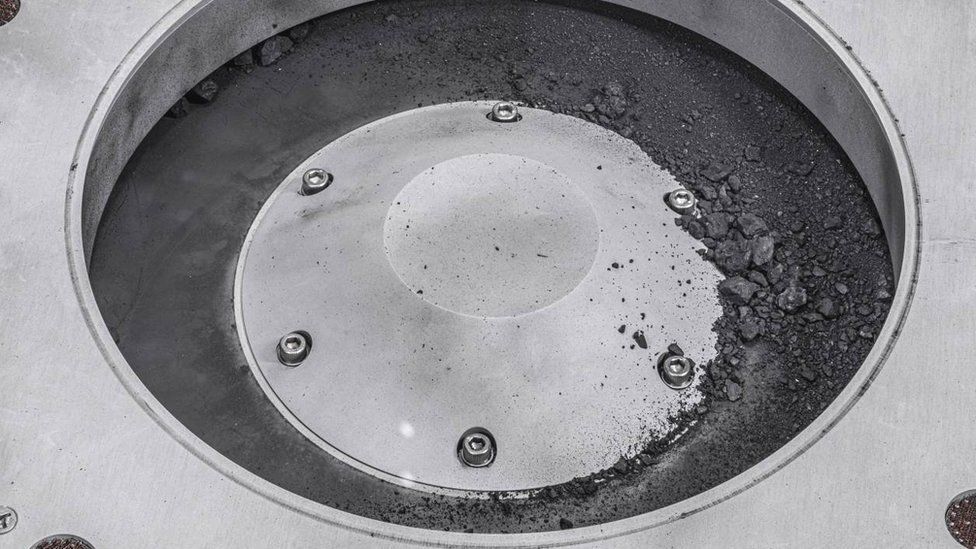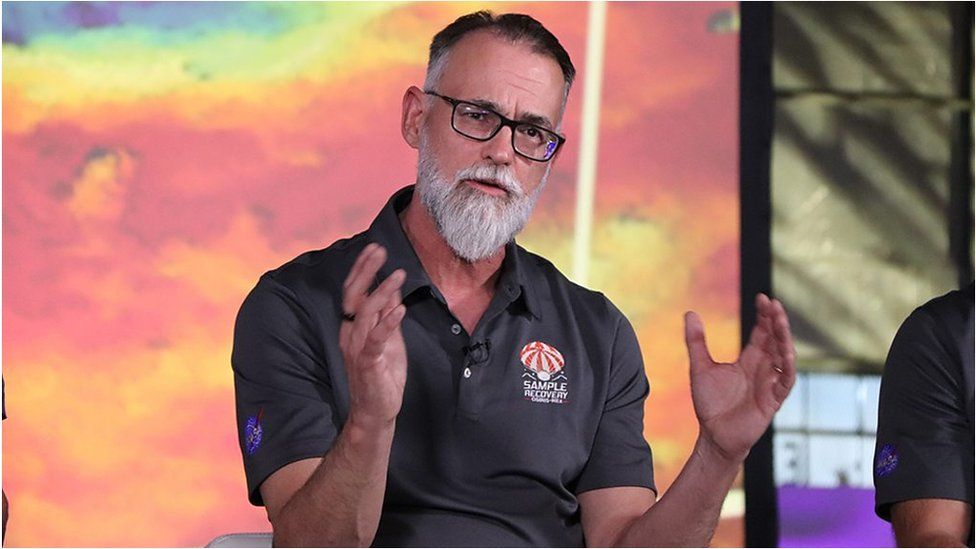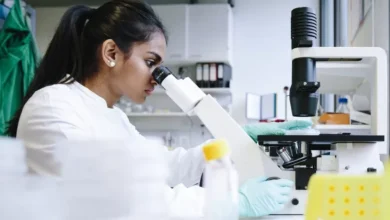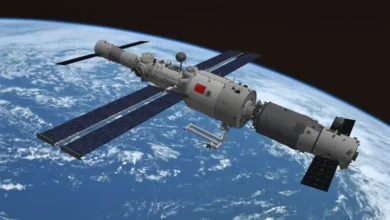Osiris-Rex: Nasa’s asteroid mission ‘gathers smaller sample’

Nasa’s asteroid sample-return mission looks to have come home with a little less material than first thought.
Scientists speculated the Osiris-Rex capsule that landed in Utah in September might hold about 250g of rock from the object known as Bennu.
At the time, the projected quantity was likened by one US space agency official to the weight of a large hamster.
But researchers have now downgraded their estimate, although they still say the final amount will be prodigious.
Nasa targeted the 500m-wide asteroid because its chemistry should provide fresh insights into the formation of the Solar System some 4.6 billion years ago and possibly even into the origins of life on our world.

The ongoing uncertainty over precisely how much of Bennu has been brought back has a rather mundane explanation: the mission team can’t open fully the mechanism used to capture and store the material grabbed from the mountainous space object.
Scientists have swept up 70.32g of dust that spilled from the mechanism, called the TagSam, but two fasteners holding down an enclosing plate stubbornly refuse to unscrew.
And until these can be worked free, the majority of the dusty, extraterrestrial bounty remains tantalisingly out of reach.
What the researchers have been able to do, however, is weigh the TagSam. And, knowing its mass prior to collecting the sample, they can now say the hidden Bennu contents probably comprise 120g, give or take 20g.
So, rather than the 250g total, the mission may now be looking at “only” 170g.

But principal investigator Dante Lauretta stresses this is still a huge prize when so much can be gleaned from even the smallest of particles.
“We’re ecstatic; sixty grams was the requirement before the mission and we’ve already got 70. So, I couldn’t be happier,” the University of Arizona professor told BBC News.
“Part of the team has gone off to design new tools to open the TagSam and we’ll do that next year.”
Nasa’s director of planetary science, Dr Lori Glaze, said those tools, which will provide the required extra torque, would need not just to be fabricated but also then tested. It won’t be a quick process, therefore.
“The samples are a few billions of years old; they can wait another few weeks,” she added.

The largest piece of Bennu extracted from the TagSam so far is 3.5cm across, but much of the 70g comprises tiny fragments that are sub-millimetre in size.
Portions are being sent out to scientists across the world to investigate, and it’s already clear Bennu was an excellent choice for study.
Early analysis has indicated the asteroid contains plenty of water in the form of hydrated minerals, and an abundance of organic, or carbon-rich, compounds.
That’s a great sign. There’s a theory that carbon-rich, water-rich asteroids similar to Bennu may have been involved in delivering key components to the young Earth system. It’s potentially how we got the water in our oceans and some of the chemistry necessary to kick-start life.
The global collaboration is looking in the samples for amino acids, which are the building blocks of biological proteins; the base chemicals that form the “letters” in our genetic code; for lipids that are used in cell membranes; and for the types of sugars essential to the structure of DNA.
“There will be some exciting, detailed organic molecular results coming soon. But the team needs a bit more time to think about them because we need to make sure all the results are correct. This is so important, we don’t want to make a mistake,” explained Prof Lauretta.
The cosmochemist was speaking in San Francisco at the American Geophysical Union Fall Meeting.












